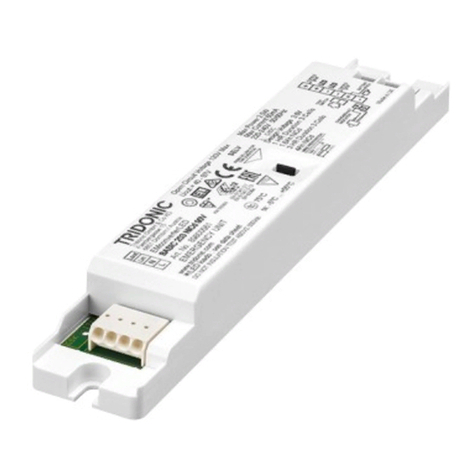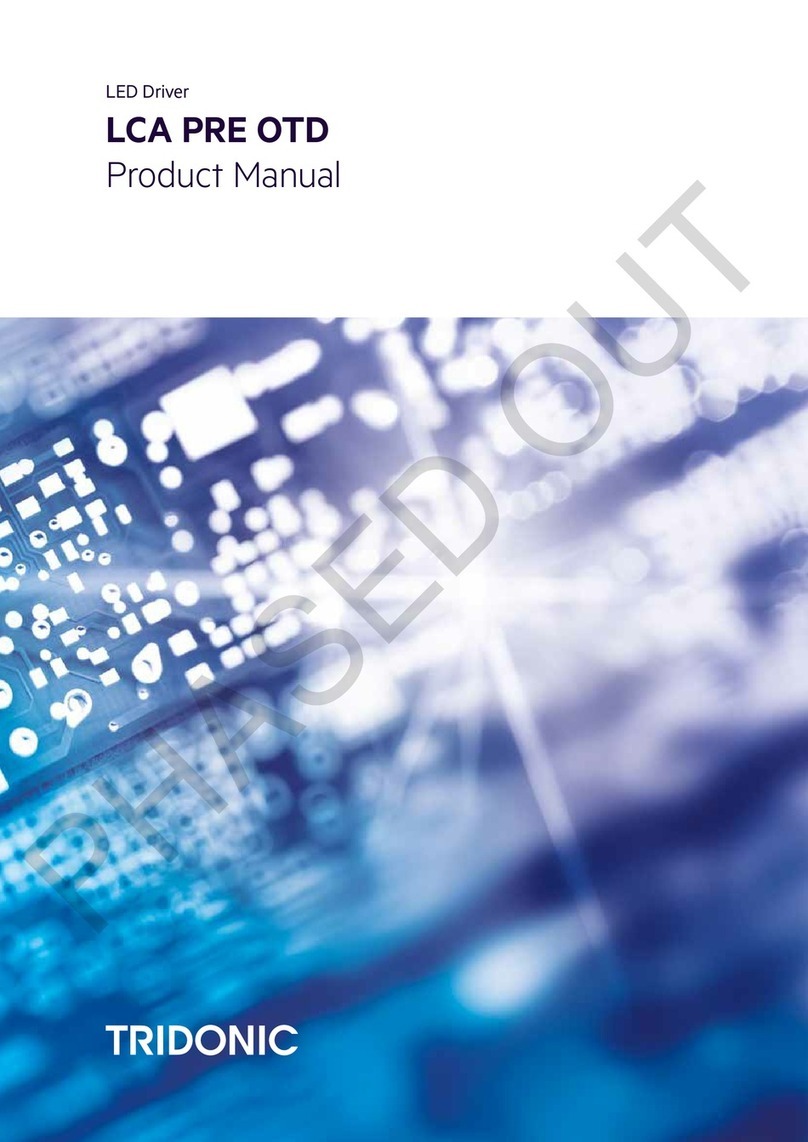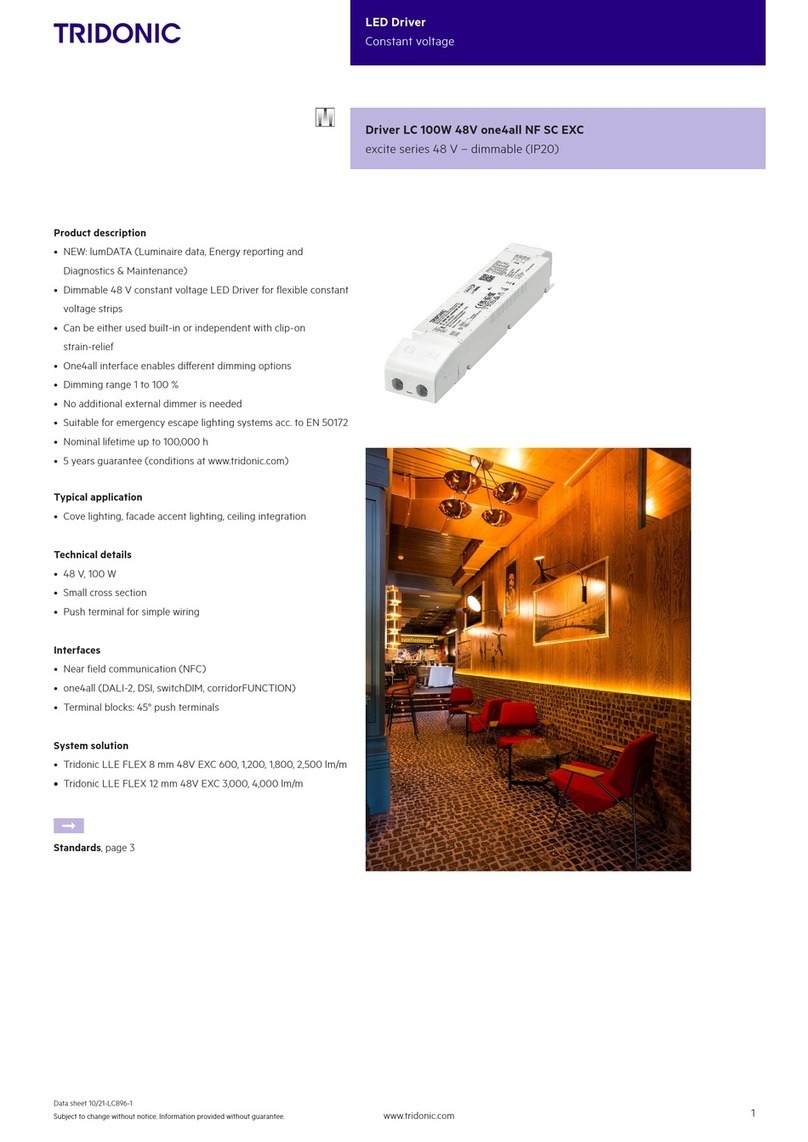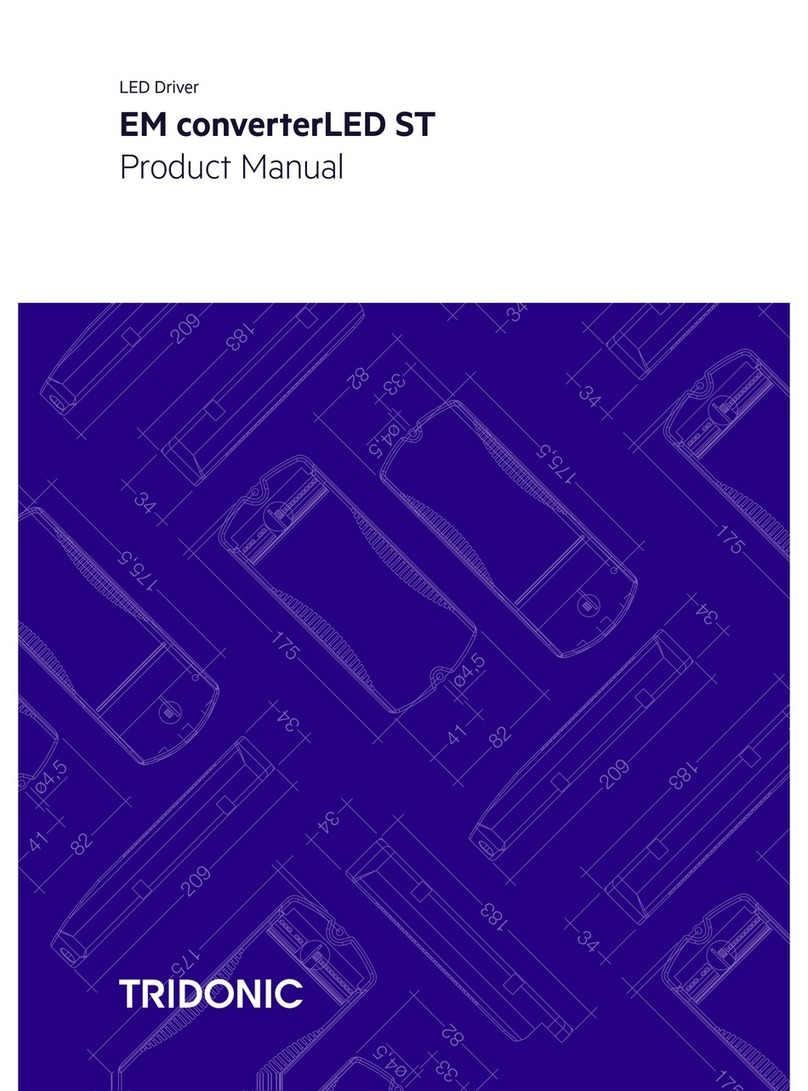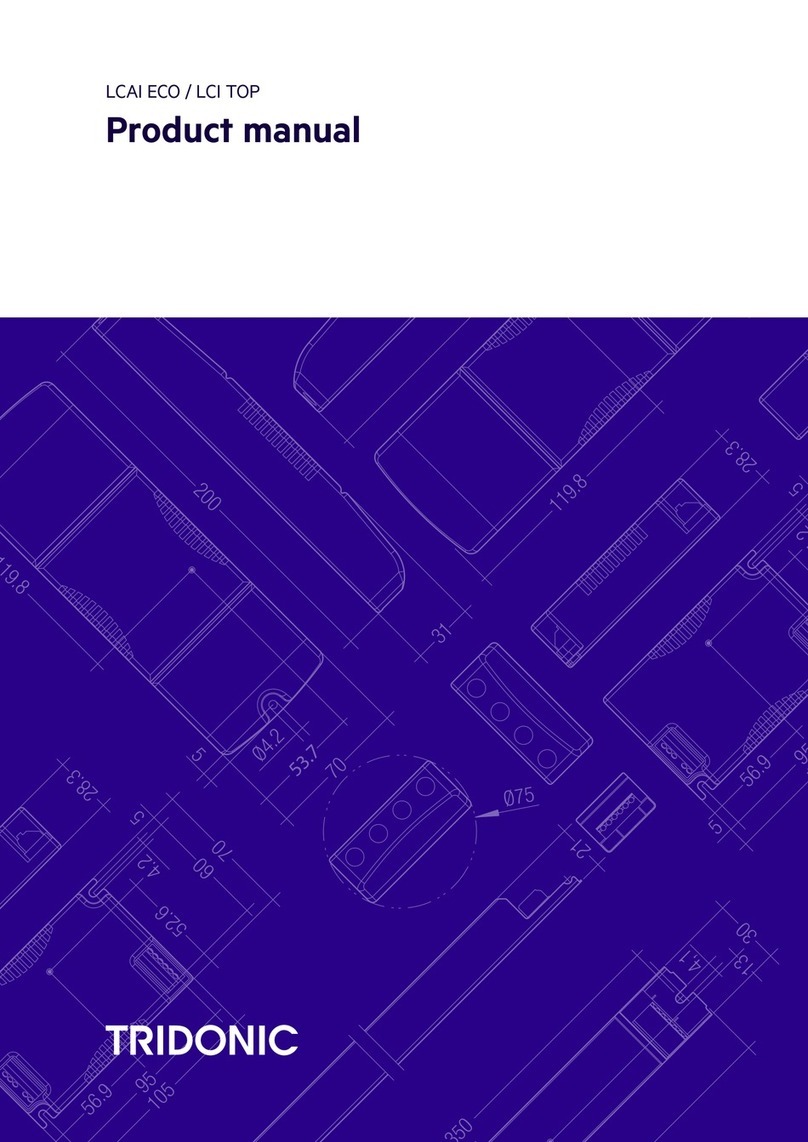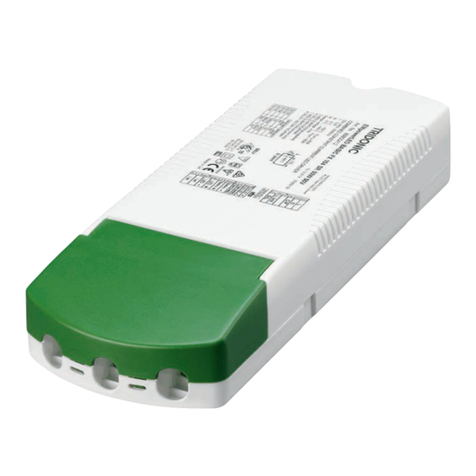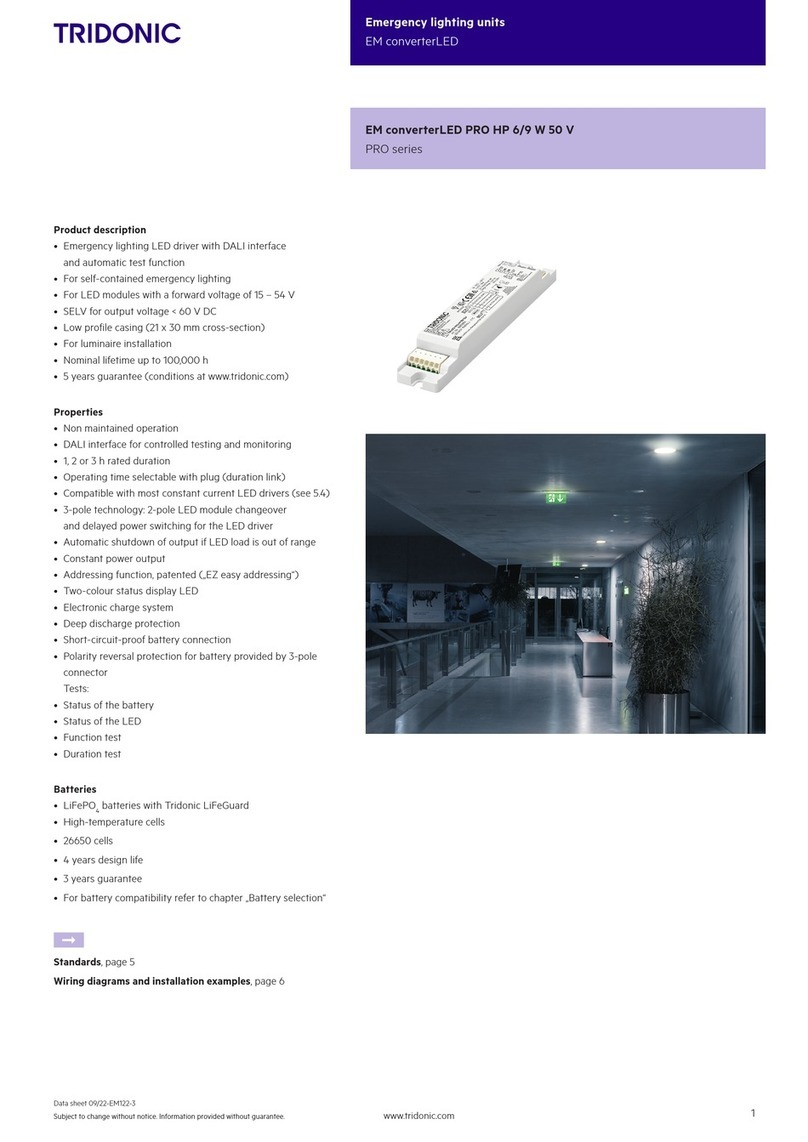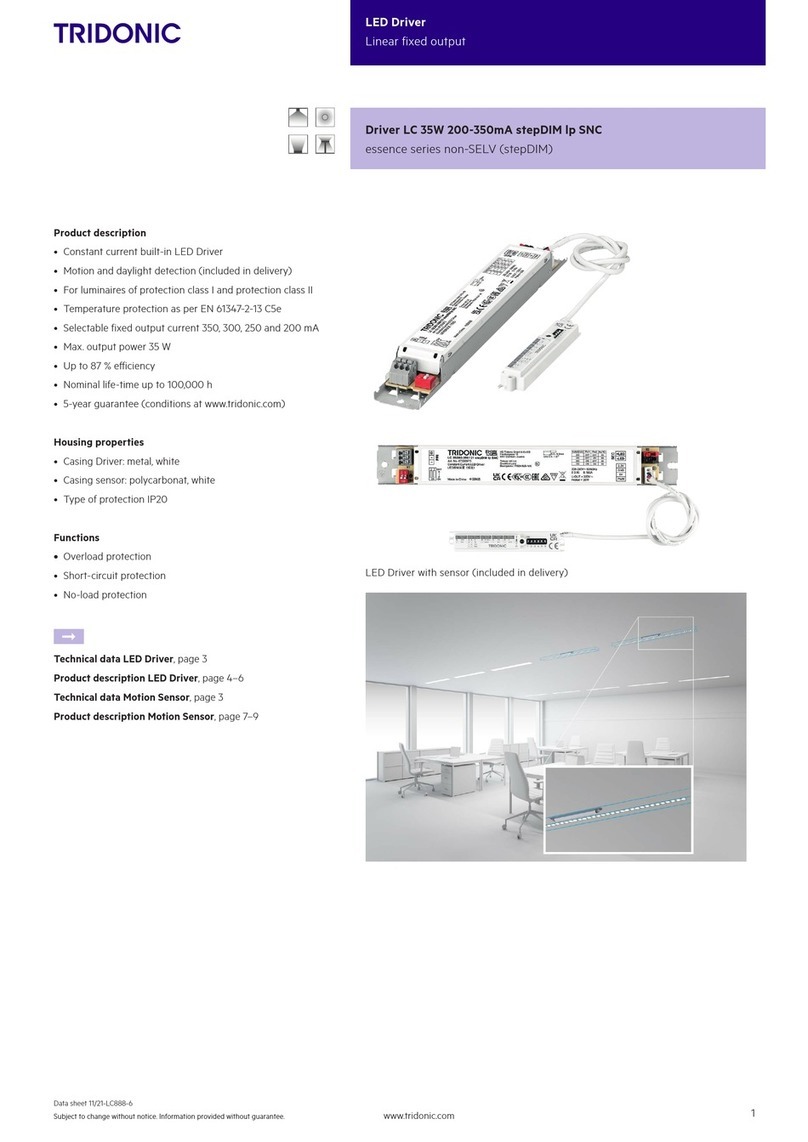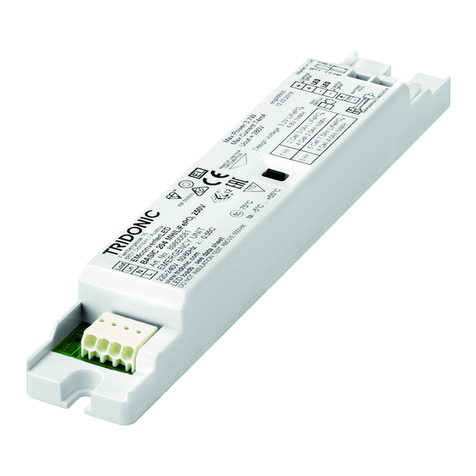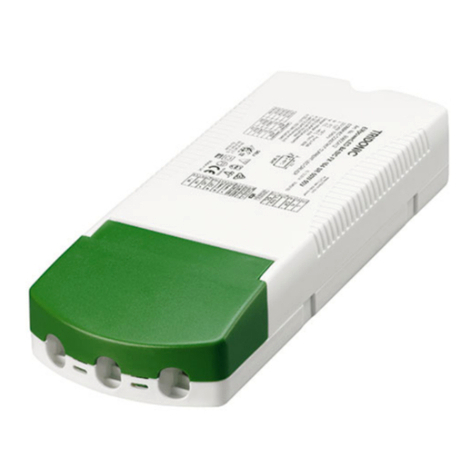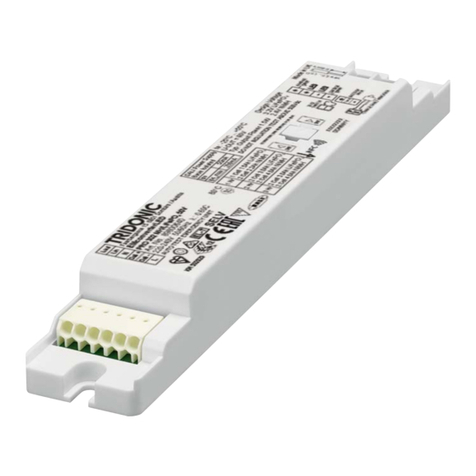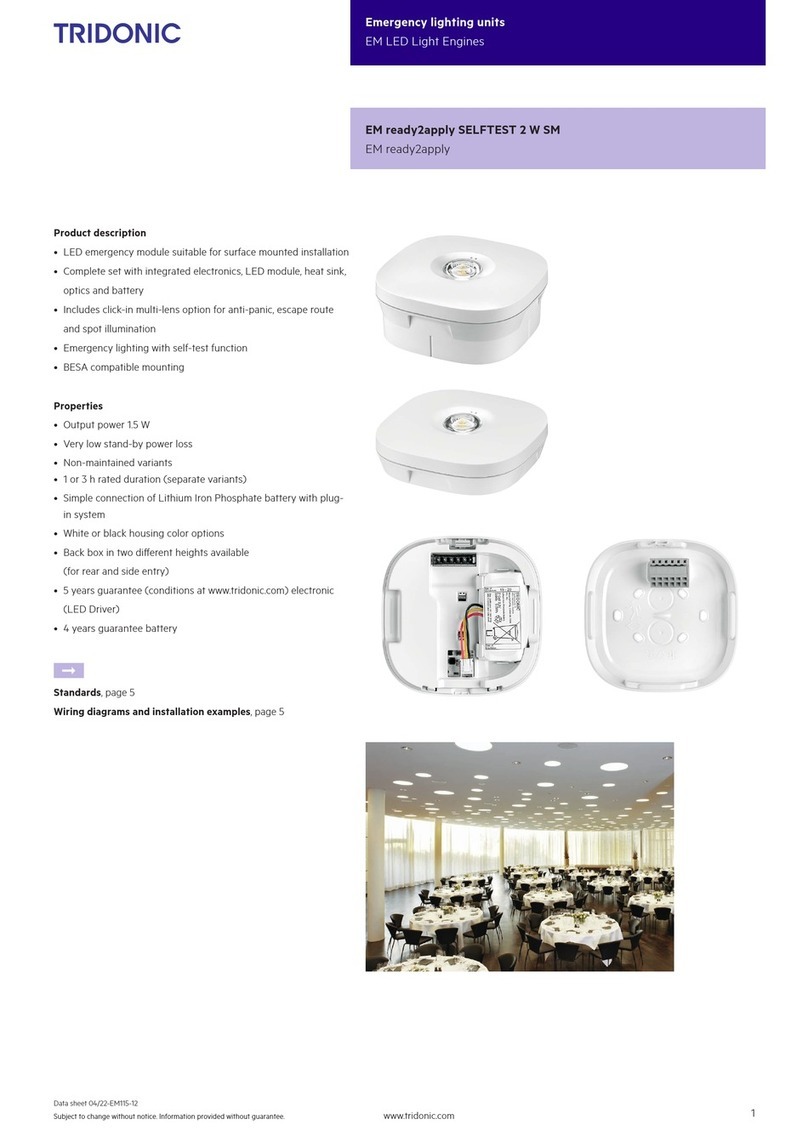
www.tridonic.com 2
Subject to change without notice. Information provided without guarantee.
Data sheet 10/21-LC895-1
LED Driver
Constant voltage
Technical data
Rated supply voltage 220 – 240 V
AC voltage range 198 – 264 V
DC voltage range 176 – 280 V
Mains frequency 0 / 50 / 60 Hz
Typ. current (at 230 V, 50 Hz, full load)1310 mA
Typ. current (220 V, 0 Hz, full load, 15 % dimming level) 55 mA
Leakage current (at 230 V, 50 Hz, full load)1< 700 µA
Max. input power 67 W
Typ. eiciency (at 230 V / 50 Hz / full load) 91 %
λ (at 230 V, 50 Hz, full load)10.99
Typ. power consumption on stand-by < 0.2 W
Typ. input current in no-load operation < 25 mA
Typ. input power in no-load operation < 0.3 W
In-rush current (peak / duration) 39 A / 187 µs
THD (at 230 V, 50 Hz, full load)1< 10 %
Starting time (at 230 V, 50 Hz, full load)1< 0.6 s
Starting time (DC mode) < 0.4 s
Switchover time (AC/DC) < 0.2 s
Turn o time (at 230 V, 50 Hz, full load) < 0.02 s
Output voltage tolerance ± 2 V
Output LF voltage ripple (< 120 Hz) ± 5 %
Max. output voltage (no-load voltage) 60 V
PWM frequency ~ 1 kHz
Dimming range 1 – 100 %
Mains surge capability (between L – N) 1 kV
Mains surge capability (between L/N – PE) 2 kV
Type of protection IP20
Lifetime up to 100,000 h
Guarantee (conditions at www.tridonic.com) 5 years
Dimensions L x W x H 195 x 43 x 30 mm
Driver LC 60W 48V one4all NF SC EXC
excite series 48 V – dimmable (IP20)
4.2
20
29.8
150
30 15
195
104
140.7
43
4.4
4.5
tc
Ordering data
Type Article number Packaging
carton2Packaging
pallet Weight per pc.
Multi packaging
LC 60W 48V one4all NF SC EXC 10 pc(s). 390 pc(s). 0.139 kg
Single packaging
LC 60W 48V one4all NF SC EXC SP 10 pc(s). 390 pc(s). 0.139 kg
2The strain relief is included in both packaging variants.
In the single packaging each Driver has also an individual packaging.
Specific technical data
Type Load Forward
voltage
Output
current
Max. output power
(at 48 V, full load)
Typ. power consumption
(at 48 V, full load)
Typ. current consumption
(at 48 V, full load)
Max. casing
temperature tc
Ambient
temperature ta max.
LC 60W 48V one4all NF SC EXC
10 % 48 V 125 mA 6 W 9 W 39 mA 84 °C -25 ... 65 °C
20 % 48 V 250 mA 12 W 15 W 65 mA 84 °C -25 ... 65 °C
30 % 48 V 375 mA 18 W 21 W 91 mA 84 °C -25 ... 65 °C
40 % 48 V 500 mA 24 W 28 W 122 mA 84 °C -25 ... 65 °C
50 % 48 V 625 mA 30 W 34 W 148 mA 82 °C -25 ... 60 °C
60 % 48 V 750 mA 36 W 40 W 174 mA 82 °C -25 ... 60 °C
70 % 48 V 875 mA 42 W 47 W 204 mA 81 °C -25 ... 55 °C
80 % 48 V 1.000 mA 48 W 53 W 230 mA 81 °C -25 ... 55 °C
90 % 48 V 1.125 mA 54 W 60 W 261 mA 80 °C -25 ... 50 °C
100 % 48 V 1.250 mA 60 W 66 W 287 mA 80 °C -25 ... 50 °C
1Valid at 100 % dimming level.
